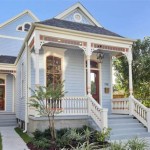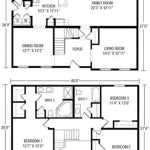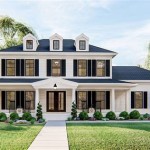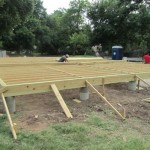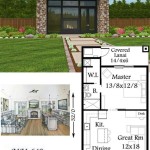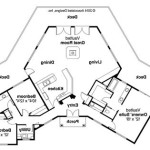Row house plans, also known as townhouse plans, refer to architectural designs for residential buildings that are connected to each other along a shared wall. These plans are commonly utilized in urban areas and offer numerous benefits, including maximized land usage, efficient energy consumption, and a sense of community among residents. For instance, the famous brownstone row houses of New York City exemplify the classic application of row house plans.
The design of row house plans often incorporates a narrow footprint, with the width of the building typically ranging from 15 to 25 feet. This efficient use of space allows for a higher density of housing units within a given area. Additionally, the shared wall between adjacent structures contributes to thermal efficiency, reducing heating and cooling costs for residents.
In the following sections, we will delve deeper into the advantages and considerations involved in designing and constructing row house plans. We will explore the unique features, layout options, and construction techniques that define this popular form of housing.
To summarize, row house plans offer several key advantages:
- Efficient land use
- Reduced construction costs
- Shared wall insulation
- Sense of community
- Architectural variety
- Urban infill potential
- Increased density
- Enhanced privacy
Overall, row house plans represent a practical and versatile approach to urban housing, combining affordability, efficiency, and a sense of place.
Efficient land use
Row house plans are renowned for their efficient use of land, making them an ideal housing solution for densely populated urban areas. By connecting individual units along a shared wall, row house plans minimize the amount of land required for each dwelling, allowing for a higher density of housing within a given area.
This efficient land use has several advantages. Firstly, it reduces the overall cost of land acquisition for developers, making row house plans a more affordable option compared to detached single-family homes. Secondly, it minimizes urban sprawl, preserving green spaces and agricultural land.
Furthermore, the compact design of row houses promotes walkability and reduces reliance on car ownership. By placing homes in close proximity to amenities, such as public transportation, shops, and schools, row house plans encourage sustainable transportation choices and contribute to a more vibrant urban environment.
In addition to these environmental benefits, the efficient land use of row house plans has social advantages as well. The close proximity of homes fosters a sense of community and neighborliness, creating a more cohesive and inclusive living environment.
Reduced construction costs
Row house plans offer significant cost savings compared to detached single-family homes due to several factors:
- Shared walls: The shared wall between adjacent row houses eliminates the need for exterior walls on one side of each unit, reducing construction materials and labor costs.
- Simplified roof design: Row houses typically have simpler roof designs compared to detached homes, as they share a common roof structure with adjacent units. This reduces the amount of roofing materials and labor required.
- Shared utilities: In some cases, row houses can share utility lines and connections, such as water, sewer, and gas, further reducing construction costs.
- Economies of scale: Developers can often achieve economies of scale by constructing multiple row houses simultaneously, leading to lower material and labor costs per unit.
Additionally, row house plans often incorporate efficient use of space, reducing the overall square footage of each unit. This can result in lower construction costs for materials and labor.
Shared wall insulation
Shared walls in row house plans offer significant advantages in terms of insulation and energy efficiency:
- Reduced heat loss: The shared wall between adjacent row houses acts as a thermal barrier, reducing heat loss through the walls. This is particularly beneficial during cold weather, as it helps to maintain a comfortable indoor temperature while reducing heating costs.
- Improved sound insulation: Shared walls also provide improved sound insulation, reducing noise transmission between adjacent units. This can be important for creating a more peaceful and private living environment, especially in densely populated urban areas.
- Simplified maintenance: With only one exterior wall per unit, row houses require less maintenance compared to detached homes. The shared wall eliminates the need for exterior painting or repairs on one side of the building, reducing maintenance costs and effort.
- Increased energy efficiency: The combination of reduced heat loss and improved insulation contributes to increased energy efficiency in row houses. This can lead to lower energy bills and a reduced carbon footprint.
Overall, the shared wall insulation in row house plans offers numerous benefits, including energy savings, improved comfort, reduced noise, and simplified maintenance.
Sense of community
Row house plans foster a strong sense of community among residents due to several factors:
- Shared outdoor spaces: Many row house developments incorporate shared outdoor spaces, such as courtyards, gardens, or stoops. These spaces provide opportunities for residents to interact with their neighbors, build relationships, and create a sense of belonging.
- Close proximity: The close proximity of row houses encourages casual interactions between neighbors. Residents are more likely to encounter each other during daily routines, fostering a sense of familiarity and connection.
- Shared experiences: Residents of row houses often share similar experiences, such as dealing with shared walls, navigating narrow streets, or maintaining their properties. These shared experiences can create a sense of common purpose and camaraderie.
- Block parties and community events: Row house communities often organize block parties and other community events, providing opportunities for residents to socialize, celebrate, and build a stronger sense of place.
The sense of community in row house plans extends beyond the immediate neighbors. The close-knit nature of these communities can foster a shared identity and a sense of pride in the neighborhood. Residents are more likely to participate in local organizations, support local businesses, and advocate for improvements in their community.
Overall, the sense of community in row house plans is a valuable aspect that contributes to the overall well-being and quality of life for residents.
Architectural variety
Row house plans offer a surprising degree of architectural variety, allowing homeowners to customize their homes to suit their individual tastes and needs. Despite sharing common structural elements, row houses can vary significantly in terms of their exterior design, interior layout, and overall style.
- Facade diversity: Row houses can feature a wide range of facade designs, from traditional brick exteriors to modern glass and metal facades. Homeowners can choose from a variety of architectural styles, such as Victorian, Georgian, or Contemporary, to create a unique look for their property.
- Interior flexibility: While row houses typically have a narrow footprint, the interior layout can be quite flexible. Homeowners can choose from a variety of floor plans that offer different configurations of rooms, such as open-concept living areas, separate dining rooms, and multiple bedrooms. This flexibility allows homeowners to customize their homes to meet their specific lifestyle needs.
- Customization options: Many row house developments offer customization options that allow homeowners to personalize their properties. These options may include choosing from a range of exterior finishes, selecting different window and door styles, or adding features such as balconies or porches. This level of customization allows homeowners to create a truly unique home that reflects their individual style.
- Historical preservation: In some cases, row house plans may involve the adaptive reuse of historic buildings. This can involve preserving the original facade and architectural details while updating the interior to meet modern building codes and standards. This approach allows homeowners to enjoy the charm and character of a historic building with the benefits of a modern home.
The architectural variety of row house plans ensures that there is a style to suit every taste and need. Whether homeowners prefer a traditional Victorian townhouse, a modern glass-fronted residence, or a cozy cottage-style row house, they can find a plan that meets their vision.
Urban infill potential
Row house plans have significant potential for urban infill, which involves the development of vacant or underutilized land within existing urban areas. This potential stems from several key factors:
- Narrow footprint: The narrow footprint of row houses makes them ideal for infill development on small or irregularly shaped lots. They can be easily integrated into existing neighborhoods without disrupting the overall character or scale of the area.
- Adaptability: Row house plans can be adapted to a variety of lot sizes and configurations. This adaptability makes them suitable for infill development on both small and large parcels of land.
- Mixed-use potential: Row house plans can be combined with commercial or retail spaces on the ground floor, creating mixed-use developments that revitalize urban areas and promote walkability.
- Increased density: Row house developments can increase the density of housing within urban areas without sacrificing livability. The compact design of row houses allows for a higher number of units per acre compared to detached single-family homes.
Urban infill development using row house plans offers several advantages. It helps to revitalize declining neighborhoods, increase housing options, and create more vibrant and sustainable urban environments. By utilizing vacant or underutilized land, row house developments can reduce urban sprawl and preserve green spaces.
Increased density
Row house plans offer the potential for increased density in urban areas without compromising livability or quality of life. This increased density stems from several key factors:
- Compact design: Row houses have a narrow footprint and are typically built close together, allowing for a higher number of units per acre compared to detached single-family homes. This compact design maximizes land usage and reduces urban sprawl.
- Shared walls: The shared walls between row houses eliminate the need for exterior walls on one side of each unit, resulting in a more efficient use of space. This allows for a higher density of housing without sacrificing privacy or natural light.
- Vertical expansion: Row houses can be constructed with multiple stories, further increasing the density of housing. This is particularly useful in urban areas where land is scarce and expensive.
- Mixed-use development: Row house plans can be combined with commercial or retail spaces on the ground floor, creating mixed-use developments that increase the density and vibrancy of urban neighborhoods.
Increased density in row house developments offers several advantages. It helps to revitalize declining neighborhoods, increase housing options, and create more walkable and sustainable urban environments. By utilizing land more efficiently, row house developments can reduce urban sprawl and preserve green spaces.
Enhanced privacy
Row house plans offer several features that contribute to enhanced privacy for residents:
Shared walls: The shared walls between row houses act as sound barriers, reducing noise transmission between adjacent units. This is particularly beneficial in densely populated urban areas, where noise pollution can be a significant concern. Residents can enjoy a quieter and more peaceful living environment, free from the disturbances of neighboring activities.
Private outdoor spaces: Many row house plans incorporate private outdoor spaces, such as courtyards, balconies, or rooftop terraces. These spaces provide residents with a secluded area to relax, entertain guests, or simply enjoy the outdoors without feeling overlooked or exposed to public view.
Setbacks from the street: Row houses are typically set back from the street, creating a buffer zone that enhances privacy and security. This setback provides a sense of separation from the public thoroughfare, reducing noise and visual disturbances while increasing the overall privacy of the home.
Fenced or gated entrances: Some row house developments incorporate fenced or gated entrances, providing an additional layer of privacy and security for residents. These barriers restrict access to the property, creating a more controlled and exclusive environment.
Overall, the combination of shared walls, private outdoor spaces, setbacks from the street, and fenced or gated entrances contributes to the enhanced privacy that row house plans offer, making them an attractive option for homeowners seeking a balance between urban living and personal seclusion.










Related Posts

